These are the stories for today...
Be safe out there!
Tom
KC-46’s Refueling Boom Damaged While Refueling F-22s
By Chris Gordon
A U.S. Air Force KC-46 tanker suffered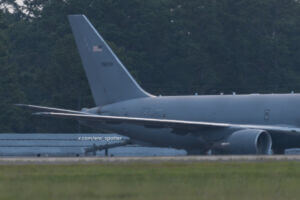 damage to its boom while refueling F-22 Raptors off the coast of Virginia on July 8, Air & Space Forces Magazine has confirmed, with reported radio communication from the crew indicating the boom “detached.”
damage to its boom while refueling F-22 Raptors off the coast of Virginia on July 8, Air & Space Forces Magazine has confirmed, with reported radio communication from the crew indicating the boom “detached.”
The aircraft, a Boeing KC-46 Pegasus from McConnell Air Force Base, Kan., declared an in-flight emergency and eventually diverted to Seymour Johnson Air Force Base, N.C., a spokesperson for the 22nd Refueling Wing confirmed.
According to air traffic control audio, obtained and published by The War Zone, the crew radioed that “our boom has detached from the aircraft” and that they were running emergency checklists.
Public records and flight tracking data show that the aircraft involved in the incident is a six-year-old KC-46, serial number 17-46033, flying under the callsign FELL81.
The plane began its flight in Kansas and, after the incident, descended below 10,000 feet, and circled the airspace around Joint Base Langley-Eustis, Va., before flying to Seymour Johnson, according to flight tracking data and Air Force officials.
“A KC-46A Pegasus from McConnell Air Force Base declared an in-flight emergency July 8, while operating off the coast of the eastern United States, refueling F-22s,” John Van Winkle, a spokesperson for the 22nd Air Refueling Wing, confirmed. “The crew had to make the decision to land at Seymour Johnson Air Force Base, N.C., and has landed safely there. The aircraft will remain there for the time being.”
Van Winkle said Air Force officials were still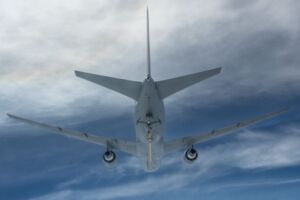 working to verify details surrounding the mishap and the extent of the damage to the aircraft.
working to verify details surrounding the mishap and the extent of the damage to the aircraft.
“There was damage to the KC-46’s boom today,” Van Winkle added. “We’re letting the Safety Investigation work to determine the nature and causes of the in-flight emergency, and that will be a complete and methodical process looking at every conceivable aspect of the mission.”
An image provided to Air & Space Forces Magazine by a local aircraft photographer, X user enc_spotter, shows the tanker at Seymour Johnson with part of its boom missing.
The aircraft had flown two missions on July 7 without any reported difficulties, according to flight tracking data.
Representatives for Air Combat Command, which oversees the F-22s involved in the incident, and Joint Base Langley-Eustis, where the Raptors are based, did not respond to queries as to whether any fighters had been damaged in the incident.
The KC-46, based on the commercial 767 airframe, has been plagued by issues since its introduction into the fleet, particularly with its refueling system. Boeing resumed deliveries of the aircraft in May after the Air Force halted acceptance of new planes for months due to cracks in the wings—an issue which Boeing and the Air Force say is now fixed.
A long-standing problem has been a so-called “stiff boom,” which prevents the aircraft from refueling the A-10 Thunderbolt II. Contractors and the Air Force are working on a redesigned actuator as a fix.
Another issue involves the aircraft’s Remote Vision System 2.0, an overhaul of the camera system boom operators use to guide the boom to receiving aircraft, which has been delayed until summer 2027. In its 2024 annual report, the Pentagon’s Office of the Director of Operational Test and Evaluation said the “KC-46A is not meeting many of its suitability metrics.”
Plane veers off runway in Ottawa County, crashes into water in gravel pit nearby
The Ottawa County Sheriff's Office said two people in their 80s were inside the plane at the time. They are in the hospital with serious injuries.
Author: Kayla Crandall
OTTAWA COUNTY, Mich. — Two people are in the hospital seriously injured after a plane crashed at a small Ottawa County airport Tuesday afternoon.
in the hospital seriously injured after a plane crashed at a small Ottawa County airport Tuesday afternoon.
The Ottawa County Sheriff's Office said around 1:40 p.m., some 911 callers reported a plane crash at the Riverview Airport in Georgetown Township.
Authorities said a Cessna 177 airplane was taking off when witnesses saw it veer off the east side of the runway.
The plane crashed into the water in the gravel pit on the west side of the runway, law enforcement said.
The pilot, identified as an 84-year-old Hudsonville man, and his passenger, an 83-year-old man also from Hudsonville, were seriously hurt.
The sheriff's office said two people near the crash went into the water and helped get both men out of the water onto shore.
"They went in the water, swam out to the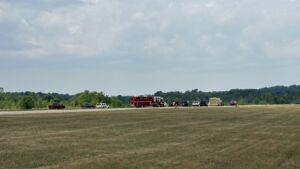 plane and helped those two passengers back to shore. And that's just about when the emergency response, our deputies and the fire department were arriving to help," Sgt. Michael Tamminga from the Ottawa County Sheriff's Office said. "I give these individuals a lot of credit. I mean, they saw a pretty serious situation happen. It sounds like they didn't think twice about what they had to do. They saw two people in distress who were involved in a plane crash, and chose to jump into the water and swim after them and bring them to shore."
plane and helped those two passengers back to shore. And that's just about when the emergency response, our deputies and the fire department were arriving to help," Sgt. Michael Tamminga from the Ottawa County Sheriff's Office said. "I give these individuals a lot of credit. I mean, they saw a pretty serious situation happen. It sounds like they didn't think twice about what they had to do. They saw two people in distress who were involved in a plane crash, and chose to jump into the water and swim after them and bring them to shore."
First responders rushed the pair to the hospital for treatment.
The FAA responded to the scene and is taking the lead on the investigation. The plane was pulled from the water around 6 p.m.
https://www.wzzm13.com/article/news/local/riverview-airport-plane-crash/69-942fa5d2-9aaf-4a97-90d1-d730883b9ecc
Two student pilots dead after planes collide near Steinbach, TSB investigating
By Charles Lefebvre
Two student pilots have died following a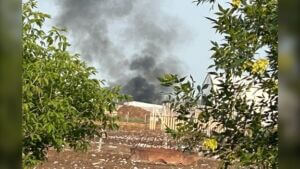 mid-air crash between two planes near Steinbach, Man., Tuesday morning, a flight school in the area confirmed.
mid-air crash between two planes near Steinbach, Man., Tuesday morning, a flight school in the area confirmed.
Adam Penner, one of the owners of flight school Harv’s Air, said the student pilots were trying to land the two planes at the same time when the collision occurred. He said the close-knit group of students and staff are devastated about what happened.
“It’s very tough, we’re kind of a small family here,” he said.
According to RCMP, officers were notified of the crash at 8:45 a.m. in the Rural Municipality of Hanover.
RCMP, fire department and emergency medical services responded and found the wreckage of two small, single-engine aircraft south of Steinbach.
Nathaniel Plett said he heard the planes crashing Tuesday morning while drinking coffee with his wife.
“We heard a noise, sounded like an airplane revving its engine, and then the propeller suddenly stopping, like a couple of thuds,” he said. “Then we heard a bang and obviously they hit the ground.”
Plett called 911 and was told they had received several calls already about the crash. He then went out to check on the scene and was able to see one of the planes that crashed.
“The plane was burning,” he said. “The wheels had broken off, the wings were intact, the cockpit was there, but it was burning and plowed into the ground.”
Penner said the planes involved were a Cessna 152 and a Cessna 172.
Penner said the crash happened while the students were practicing takeoffs and landings.
RCMP said the two pilots of the planes were pronounced dead at the scene. There were no passengers on board either plane. Their names have not been released.
The Transportation Safety Board of Canada has been notified and is investigating.
https://www.ctvnews.ca/winnipeg/article/two-dead-after-planes-collide-near-steinbach-rcmp/
NTSB Final Report: Hinson Melvin J Velocity
Landing Gear Collapse During Landing In Gusty Crosswind Conditions
Location: Norfolk, Virginia Accident Number: ERA25LA090
Date & Time: January 5, 2025, 15:26 Local Registration: N160MH
Aircraft: Hinson Melvin J Velocity Aircraft Damage: Substantial
Defining Event: Landing gear collapse Injuries: 3 None
Flight Conducted Under: Part 91: General aviation - Personal
Analysis: At the conclusion of an uneventful cross-country flight, the pilot of the experimental amateurbuilt airplane entered the traffic pattern at the destination airport and extended the airplane’s landing gear. He then observed a normal “down and locked” indication on the airplane’s avionics and continued the landing approach. The pilot described that the wind was coming from the right during the approach, with a reported velocity of about 6 knots, gusting to 18 knots. Shortly after touching down on the runway, the pilot described that there was an abnormal vibration, after which he lost directional control of the airplane. He responded by applying full rudder and brake in an attempt to counter the crosswind. The airplane continued in an uncontrolled slide and drifted left until it came to rest at the left edge of the runway. The airplane’s main landing gear collapsed during the accident sequence and the lower aft and left side of the fuselage were substantially damaged. Additionally, the nose landing gear’s wheel separated at the fork during the accident sequence. Postaccident examination of the landing gear extension/retraction system revealed that it operated normally.
Probable Cause and Findings: The National Transportation Safety Board determines the probable cause(s) of this accident to be -- A landing gear collapse during landing in gusty crosswind conditions.
FMI: www.ntsb.gov
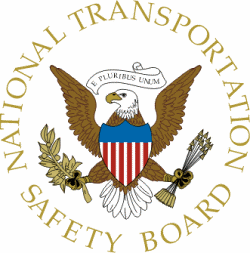
Today in History
19 Years ago today: On 9 July 2006 S7 Airlines flight 778, an Airbus A310, suffered an accident during runway excursion after landing at Irkutsk Airport (IKT), Russia, killing 125 occupants; 78 survived the accident.
| Date: | Sunday 9 July 2006 |
| Time: | 07:44 |
| Type: | Airbus A310-324 |
| Owner/operator: | S7 Airlines |
| Registration: | F-OGYP |
| MSN: | 442 |
| Year of manufacture: | 1987 |
| Total airframe hrs: | 59865 hours |
| Cycles: | 12550 flights |
| Engine model: | P&W PW4152 |
| Fatalities: | Fatalities: 125 / Occupants: 203 |
| Other fatalities: | 0 |
| Aircraft damage: | Destroyed, written off |
| Category: | Accident |
| Location: | Irkutsk Airport (IKT) - Russia |
| Phase: | Landing |
| Nature: | Passenger - Scheduled |
| Departure airport: | Moskva-Domodedovo Airport (DME/UUDD) |
| Destination airport: | Irkutsk Airport (IKT/UIII) |
| Investigating agency: | MAK |
| Confidence Rating: | Accident investigation report completed and information captured |
Narrative:
S7 Airlines flight 778, an Airbus A310, suffered an accident during runway excursion after landing at Irkutsk Airport (IKT), Russia, killing 125 occupants; 78 survived the accident.
On its last flight on July 8, 2006, the Airbus A310 F-OGYP was released with six defects as per minimum equipment list (MEL), including the deactivated state of the left engine thrust reverser. The previous two flights had been carried out with a deactivated right engine thrust reverser.
On July 9, Sibir flight 778 departed Domodeovo (DME) at night for a flight to Irkutsk (IKT). Weather at Irkutsk was poor. It was raining, overcast clouds at 600 feet and a thunderstorm in the area. At 07:38 the co-pilot reported the completion of the final leg at 850 m, whereupon he received instructions to contact Irkutsk tower. The Irkutsk tower controller cleared the crew for an approach to runway 30. Descent to the final approach leg was carried out using the airplane captain's navigational display in VOR mode, and that of the co-pilot in ILS mode, to control the airplane's position relative to the course using indications from the localizer beacon. At 07:40:18 the co-pilot reported: "Sibir 7-7-8 descending, landing gear down, ready for landing", whereupon he received the controller's clearance to land. At 07:43:13, 1500 meters short of the runway threshold and at a height of 105 m, the crew disengaged auto-pilot no. 1, and switched off the auto-throttle 2 seconds afterwards.
After breaking through the clouds, the captain obtained visual contact with the runway. He made a small elevator deflection to pitch down, which led momentarily to an increase in vertical speed and activation (at 07:43:30, at 30 m), of the "SINK RATE" ground proximity warning. At 07:43:40 the captain landed the airplane at a speed of 244 kph (132 knots) at a distance of about 200-300 meters from the runway threshold. Immediately after touchdown, with the spoiler handle armed, all spoiler sections were automatically released. 1.5 seconds after touchdown the reverse thrust lever of the right engine was moved to idle by the captain, and 3 seconds after that, after the reverser doors were in their working position, switched to maximum reverse thrust. Engine reverse thrust then started to increase. In violation of SOPs, the co-pilot did not call out the completion of reverser door movement to the working position (Rev Green). The crew did not activate the reverse thrust lever for the left engine. Afterwards the captain began to shift the reverse thrust lever of the right engine to reduce reverse thrust. Simultaneously with moving the reverse thrust lever of the right engine, the FDR records a change in position of the thrust control lever of the left engine, which in 3 steps, over 16 seconds, increased from 36.6° (idle) to 59° (~60% of the full rated takeoff thrust). The direction and periods of movement of the reverse thrust lever of engine no. 2 to reduce the reverse thrust and the thrust control lever of engine no. 1 to increase forward thrust coincided.
Because of the movement of the thrust control lever to a position greater than 10°, the spoilers retracted automatically. Retraction of the spoilers led to the deactivation of the automatic braking mode. At this time the speed was about 180 kph (98 knots) and, on account of the large asymmetry of engine thrust, the airplane started to turn to the right, which the airplane captain counteracted by depressing the left pedal and forcibly applying the brakes. The speed stabilized at 98 knots. At 07:44:21 the crew (most probably the co-pilot) tried once again to deploy the thrust reverser on the right engine, for which he moved the reverse thrust lever of the engine over to maximum reverse thrust but, per design, the location of the thrust control lever for the left engine in a mode higher than 55° prevented the operation, and the thrust reverser doors failed to unlock. The right engine remained at idle forward thrust. After this attempt to deploy the thrust reverser, the airplane started to swerve to the left. The crew attempted to correct this movement and the airplane started to drift to the right.
The right main bogie exited the runway at a speed of 98 knots, and the nose landing gear and the left main bogie moved along the reinforced concrete portion of the runway. The nose landing gear and the left main bogie exited on to the ground at the end of the reinforced concrete runway at 07:44:36. The airplane traveled over clay soil with a grassy cover. At a distance of 210 m from the threshold of runway 12, the left engine destroyed part of the antenna and the wooden fence of the localizer beacon system. At a distance of 250 m from the threshold of runway 12, the airplane crossed an asphalt bypass road. The airplane stopped at 07:44:40 after colliding with a reinforced concrete airport perimeter fence and with brick structures (garages) behind it. The airplane broke apart during the collision and burst into flames.
CONCLUSION: "The cause of Sibir A-310 F-OGYP accident was the erroneous and uncontrolled actions by the crew during rollout after landing in a configuration with one engine reverser deactivated. After touchdown, the Captain, while acting on the reverse thrust lever of the right engine, inadvertently and uncontrollably moved the throttle lever for the left engine, whose thrust reverser was deactivated, from the "idle" to the significant forward thrust position. Inadequate monitoring and call-outs of airplane speed and engine parameters by the Co-pilot made it impossible for the crew to perform the necessary actions, either by moving the left throttle back to idle or shutting down the engines. The crew had enough time to recognize the situation.
The airplane went off the runway at the high speed of ~180 km/h, hit the concrete fence and buildings, crashed and caught fire. 125 people died as a result of the accident."
